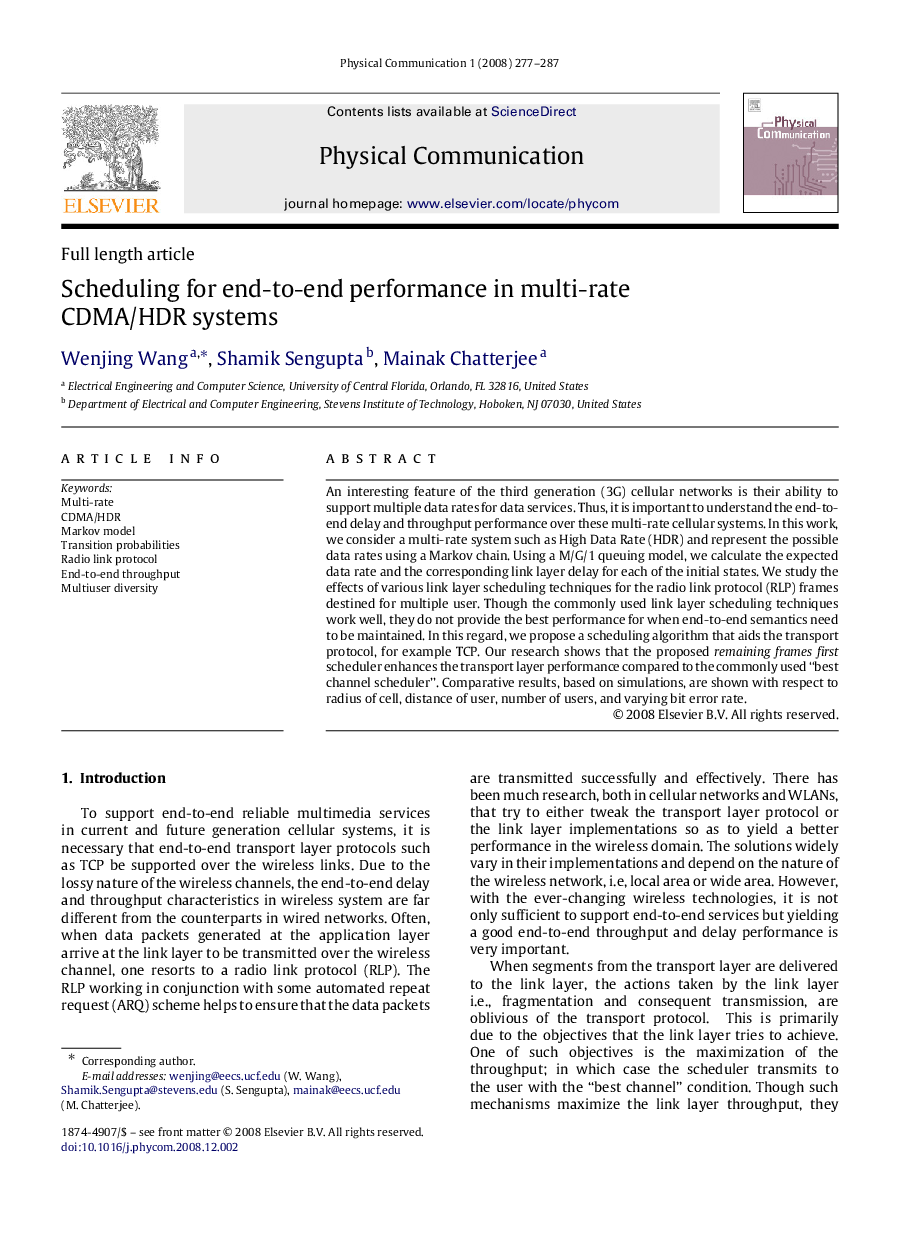| Article ID | Journal | Published Year | Pages | File Type |
|---|---|---|---|---|
| 464316 | Physical Communication | 2008 | 11 Pages |
An interesting feature of the third generation (3G) cellular networks is their ability to support multiple data rates for data services. Thus, it is important to understand the end-to-end delay and throughput performance over these multi-rate cellular systems. In this work, we consider a multi-rate system such as High Data Rate (HDR) and represent the possible data rates using a Markov chain. Using a M/G/1 queuing model, we calculate the expected data rate and the corresponding link layer delay for each of the initial states. We study the effects of various link layer scheduling techniques for the radio link protocol (RLP) frames destined for multiple user. Though the commonly used link layer scheduling techniques work well, they do not provide the best performance for when end-to-end semantics need to be maintained. In this regard, we propose a scheduling algorithm that aids the transport protocol, for example TCP. Our research shows that the proposed remaining frames first scheduler enhances the transport layer performance compared to the commonly used “best channel scheduler”. Comparative results, based on simulations, are shown with respect to radius of cell, distance of user, number of users, and varying bit error rate.
